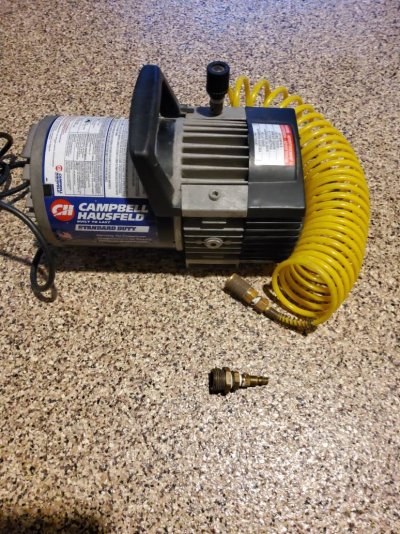Please tell me if i am doing something wrong!
When I winterize the engine, generator and air-conditioning, I go to the water intake filters, close the valves, remove the filters then suck out the little bit of water left with a wet-dry vacuum. My wife then starts things up while i pour large jugs of pink AF and dump it in the filter. No muss or fuss and fast. When she sees pink coming out the exits she shuts down. (yes mufflers were drained) Washdown and toilets are similar.
For the plumbing, I let the pressure pump suck it through a separate hose that is "T"ed before the pump but after the water tank.
Does anyone see any problems with this system? Or is this the norm?
Thanks Barrie
Barrie,
I noticed a couple of posts about "Green versus pink". There are two different types of antifreeze. The pink is used to winterize and is ok to flow into the seawater. The other type is the kind that is always resident in your engine, and should be changed (usually around every five years). Never use that for winterizing.
When winterizing, there are a couple of things to consider.
The engine will use a relatively large flow of pink, to pull through the engine. So, if you plan to just pour the antifreeze into the strainer you will need to pour quickly, and have the bottles open and ready to switch out. I would use probably 7 to 9 gallons of the pink. While you can use either -50 degrees or -100 degrees, I always use -100 degrees in mine. Remember that the -50 starts to thicken in the teens. The engine is expensive, so I always use -100.
Both AC and sometimes the gennie intakes will develop an "airlock", which will prevent the pink from flowing through. So, care must be taken to ensure that the strainer is topped up with the antifreeze, or it may stop running it through. I had this situation with our AC's.
For the AC's I used a compressor to blow the lines out. If you do that, consider that you have two outlet drains for the raw water if you have two AC's. You will need to have someone hold a dowel or something else against one outlet, while the air is flowing out of the other. I kept the pressure at 20 or 30 lbs, not wanting to blow a hole in the AC lines. That should be sufficient to move the water out. I didn't run pink through, but never had a problem. We would very occasionally get below zero, but only for a very short period. YMMV!
I made it easy on myself.
I always used the Seaflush tool, which worked like a charm. Search SeaFlush and watch a couple of videos. (The added advantage is that you can run Barnacle Buster through the raw water system using the SeaFlush if you want to clean out the exchangers, etc.) For the engine, I would fill a five gallon bucket with the pink. Then after the engine starts up, I would pour three more gallons into the bucket as it drains through the Seaflush, and then the engine. Simple, and a lot less messy than trying to hold a funnel, and deal with the gallon jugs and "hitting the hole" while trying to keep up with the flow.
It was especially handy for the gennie, in a tight space for me, with the airlock issue. Again, the AC would airlock anyway, so for the AC I would just blow out the lines.
For the first year, you may want to buy a Temp Stick, and monitor the ER temperature in different places relative to the outside air. I did that, and only got marginally below 32 at the engine when the outside air was below zero (I kept the boat in the water year round). However, the gennie was more prone to below 32 due to its location in the lazarette on my Carver.
Looks like the freshwater system has been well addressed already in this set of posts.
Hope this helps.



